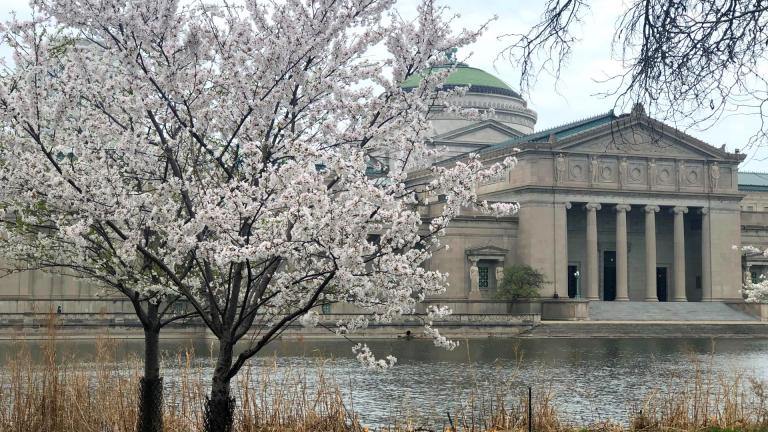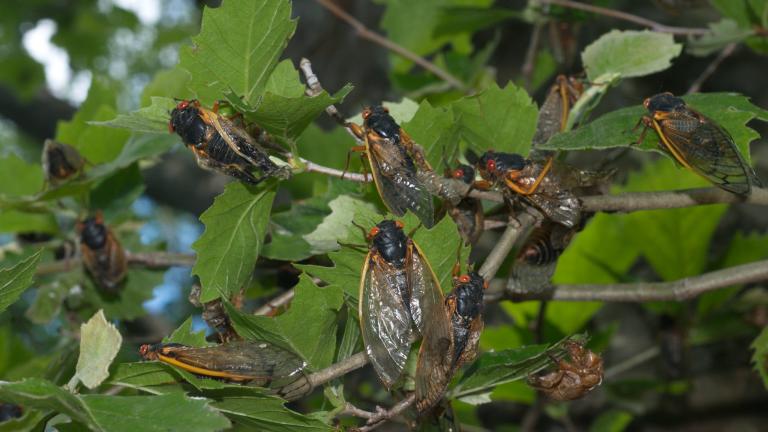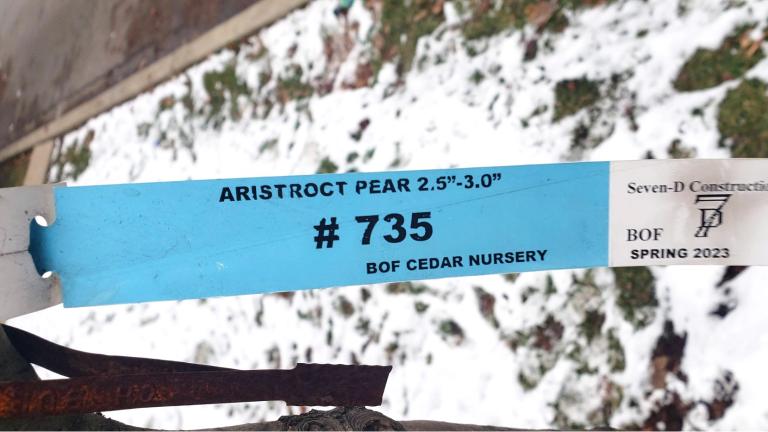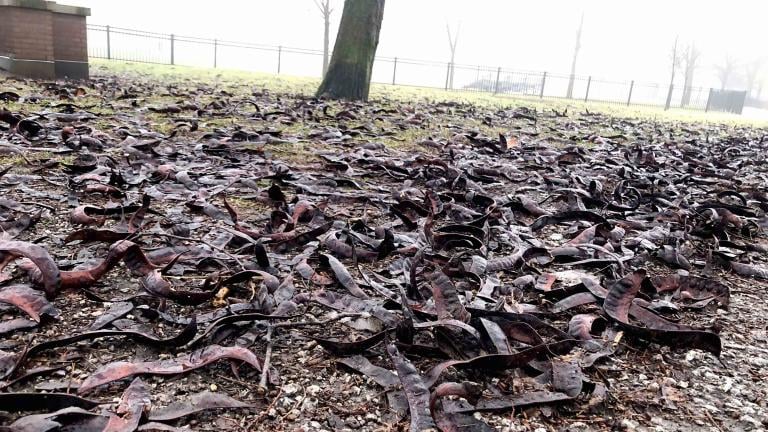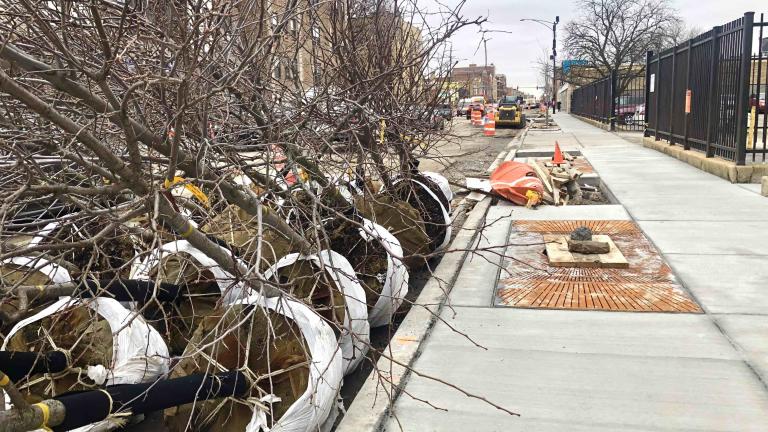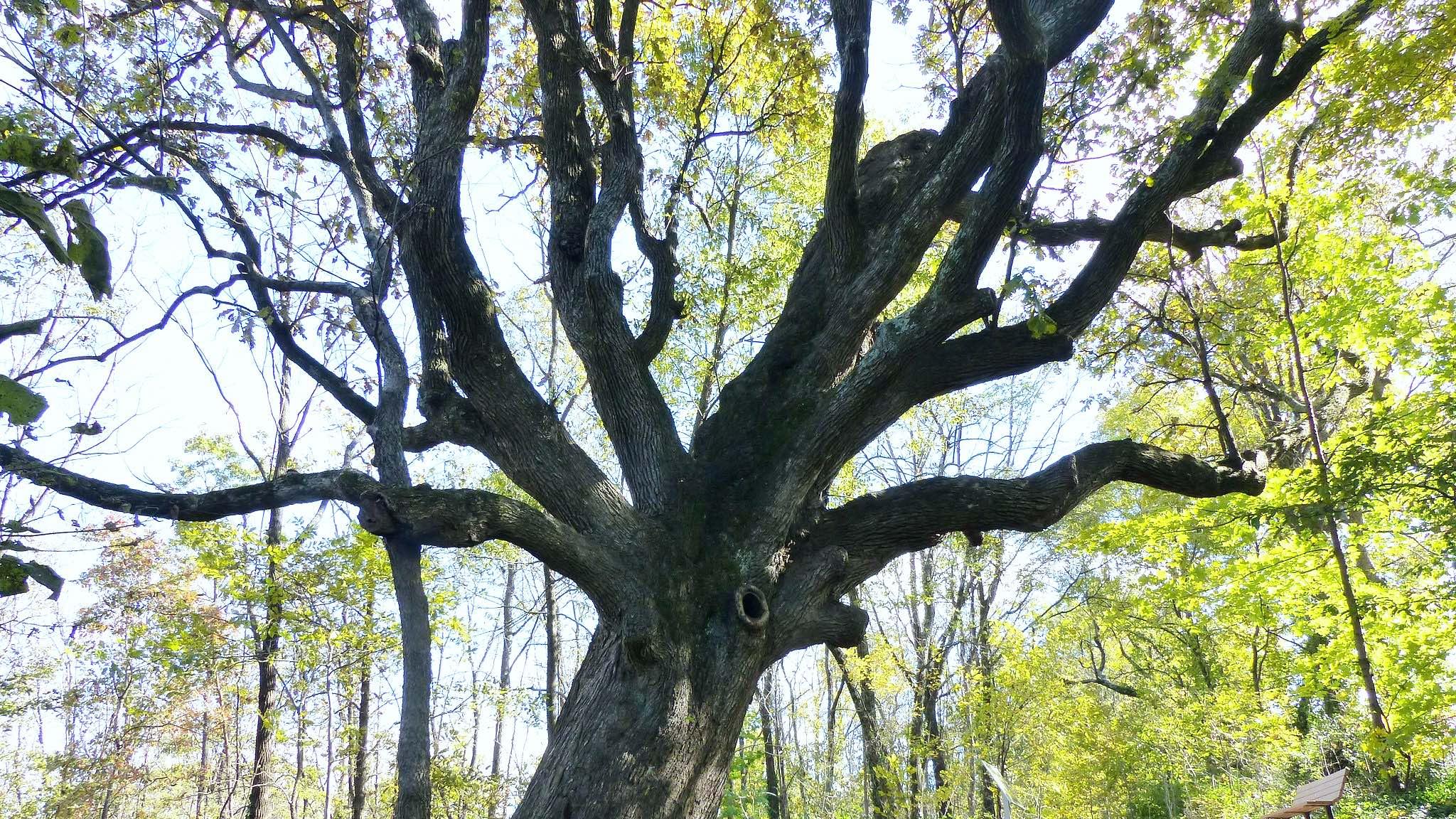 Bur oak is one of more than 80 oak species native to the U.S. (Karen Roussel / Flickr Creative Commons)
Bur oak is one of more than 80 oak species native to the U.S. (Karen Roussel / Flickr Creative Commons)
If asked to quickly jot down a list of U.S. trees, most people could probably name 20 or maybe even 30 off the top of their head.
There are actually 881 species of native trees in the 48 contiguous U.S. states — including 85 different types of oak alone. It took a team of researchers, led by Morton Arboretum, the better part of the past five years to arrive at that total, pulling data from scores of disparate sources, including historical field expedition journals.
Some of the results aligned with what researchers already know about biodiversity in the U.S. As expected, botanically rich states like Florida, California and Texas, as well as the Southeast, have the greatest number of different tree species, said Murphy Westwood, vice president of science and conservation at Morton Arboretum.
What did surprise Westwood was the extent to which the U.S. is defined by a handful of genera, with oak and hawthorn running neck in neck for the lead, far outpacing even the closest also-rans.
“I think it’s really interesting that we as a country have some really iconic, dominant tree groups,” said Westwood. “We are a country of oaks, hawthorns, willows and pines it turns out.”
If it seems surprising that prior to 2017, no one had thought to create a single inventory of the status of U.S. tree species, it’s worth noting that the gap of knowledge was global. No one really knew how many species there were in the world.
A collection of botanic gardens and botanic experts, operating under the auspices of the International Union for Conservation of Nature, launched the Global Tree Assessment in 2015, with an aim to better understand the planet’s tree diversity as well as their risks of extinction.
The U.S. project spun out of that broader effort, spearheaded by Morton Arboretum, Botanic Gardens Conservation International-US and NatureServe.
More than a simple head count (or, perhaps more accurately, trunk count), the checklist also incorporated a threat assessment for each species, a time-consuming, exhaustive process.
“We had to consult with people who knew those trees inside and out. It was a lot of literature review, it was a lot of reaching out to experts in different states,” Westwood said.
To arrive at a threat level, the research team considered several factors: How many individuals of a species are there? Where are they located? Are the populations fragmented from each other? Are they declining? Is there any conservation action underway?
“All of those things get added into this calculus to say, ‘Is it a threatened species or not?’” said Westwood.
This first-ever comprehensive, standardized checklist and threat evaluation, with Westwood as senior author, has been published in the journal “Plants, People, Planet.”
What the assessments revealed is that 11% to 16% of the nation’s native tree species are under threat of extinction, be it due to pests, climate change, habitat destruction, logging or some other hazard.
It’s not exactly a feel-good conclusion to a half-decade’s worth of work, but Westwood, senior author of the report, views the findings less as an ending and more as a beginning, in that it points the way toward where to direct conservation efforts.
“The most important thing to note is that our job is not done just because we know what our trees are and we know which ones are threatened,” said Westwood. “It’s not enough just to list these things, we then need to take action.”
BACK FROM THE BRINK
The checklist dataset has been purposefully made available as a spreadsheet so that it can be downloaded and manipulated in myriad ways by anyone interested in doing a deeper dive.
“There’s basically a million different ways this can be used,” Westwood said. “You can take a look at the list of threats and say, ‘OK, invasive pests and diseases are a big issue. We may need more investment in early detection and monitoring systems or in research related to how we manage invasive pests and diseases.’ Or take a look at places like Florida, Texas, California and the Southeast and say, ‘Wow there’s a really high concentration of threatened trees here, let’s take a look at our protected areas. Are there corridors between them? Is the habitat healthy and functional?’“
Already the project is paying dividends.
As the research team was wrapping up some of the oak assessments, they noticed a cluster of very rare and understudied oaks in southwest Texas.
“We said, ‘We need to go down there and do some survey work and get some botanists into the field,’” Westwood recalled.
Morton Arboretum assembled oak experts from across the country and the group headed to Texas where, as it was recently announced, they rediscovered the lateleaf oak (quercus tardifolio), one of only 17 native U.S. tree species not found in any botanic garden collection.
“It was a project we knew we had expertise in, it needed to be done, we have the ability and the interest to do it, and we went out and rediscovered an extinct species,” said Westwood. “Hopefully we’ll be able to bring it back from the brink.”
More broadly, the checklist has implications outside the walls of botanic institutions.
“I would love for the average person to realize that they have a role to play,” Westwood said. “Just because you don’t live next to an old growth forest in the Pacific Northwest or Florida doesn’t mean you have nothing to do with this.”
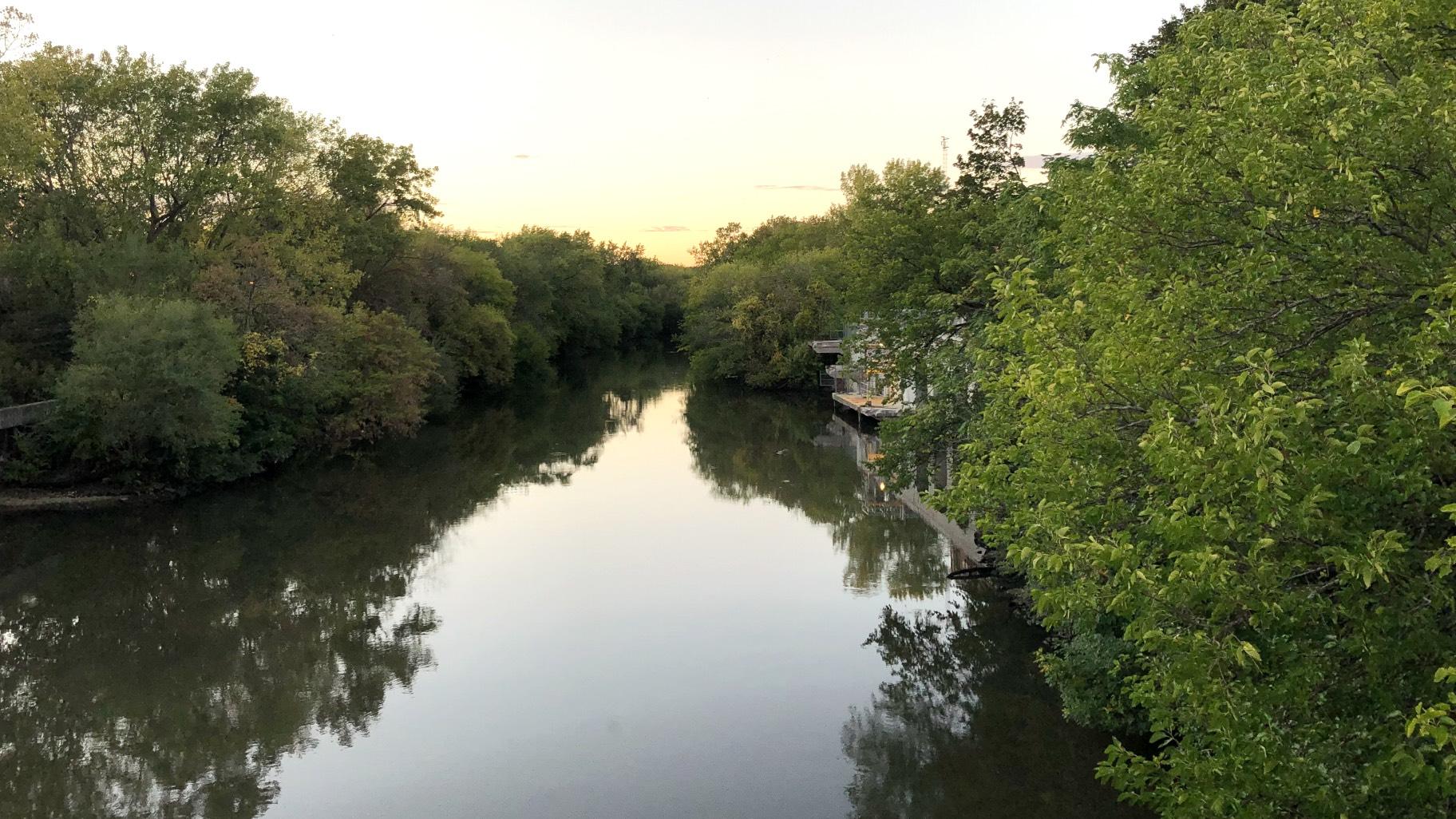 Trees along the North Branch of the Chicago River, Oct. 14, 2021. (Patty Wetli / WTTW News)
Trees along the North Branch of the Chicago River, Oct. 14, 2021. (Patty Wetli / WTTW News)
Trees form the foundation upon which much of the world’s terrestrial ecosystems and biodiversity depend, and they also play a vital role in public health. They stabilize soil, cycle nutrients, clean the air, sequester carbon, and provide food and shelter for countless animals, plants and fungi.
Yet even though trees have been recognized as a critical nature-based solution to climate change and biodiversity loss, far fewer resources are devoted to their study and conservation.
The amount of federal funding directed to plants is roughly 5% of that devoted to animals, Westwood said. As a consequence, far more people and organizations are focused on studying animals, even though, she said, there are many more plant than animal species, and animals depend on plants.
“It’s a huge problem,” Westwood said. “Botany programs continue to disappear (from universities). And that just contributes to this ‘plant blindness’ issue where we see trees as this sort of back drop, they’re rarely seen as individuals. They’re just sort of like the palette on which our animals get painted.”
At the most basic level, the checklist and threat assessment serve as the groundwork on which additional advocacy and awareness can be built.
That applies to urbanites living in places like Chicago, even though the checklist only assessed native trees in the wild. People can take part in a restoration work day at a forest preserve, they can campaign for more protected areas and more green space, they can plant a native oak in their yard, Westwood said.
“You see gardens around (Chicago) where you might have a ton of native species and it’s thriving and the trees are super healthy. That is a great way for us to support these species at the interface between the natural and built environment,” she said. “We can make our urban areas more similar to natural areas with native plants and green corridors, and all of that can help the wilderness areas in the long run.”
Contact Patty Wetli: @pattywetli | (773) 509-5623 | [email protected]

